The following diagrams display research conducted regarding the implementation of systems into a building. A local existing building in Wynwood was picked as a comparable to test-run financial and autonomous systems analysis, Tesla battery technology was chosen as an energy storage system that could potentially be used, and the NASA Sustainability Base by William McDonough + Partners was examined as an existing autonomous building comparable.
FINANCIAL + AUTONOMOUS COMPARABLE
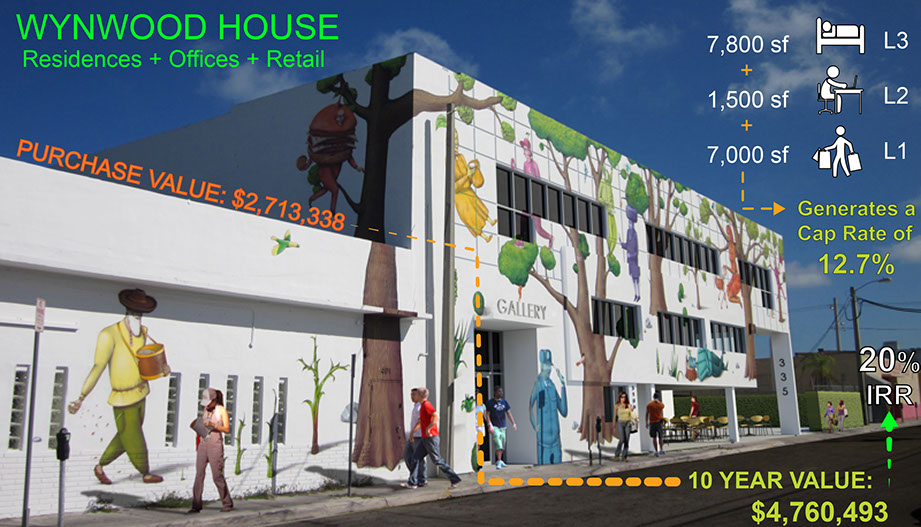
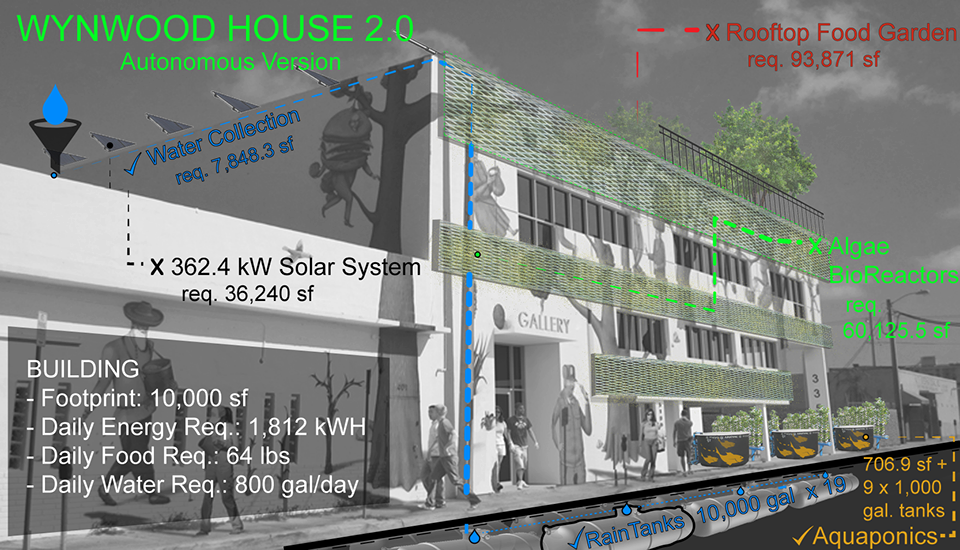
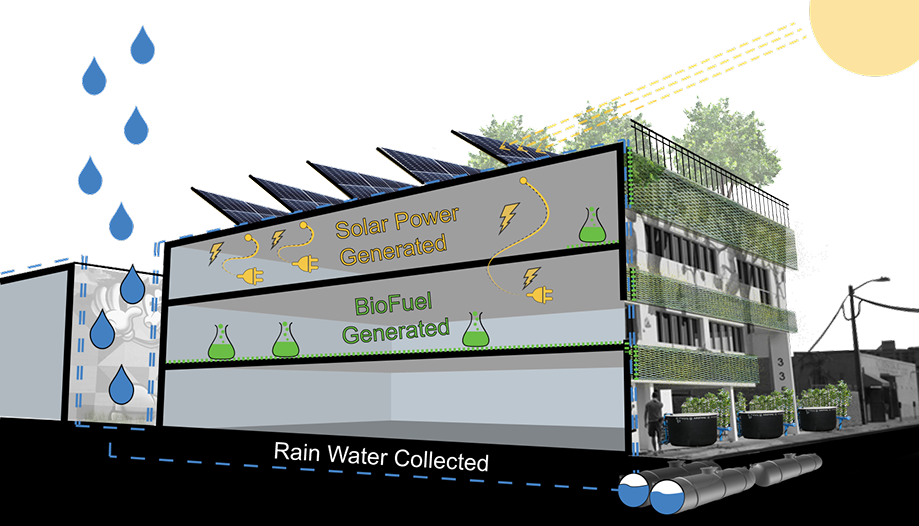
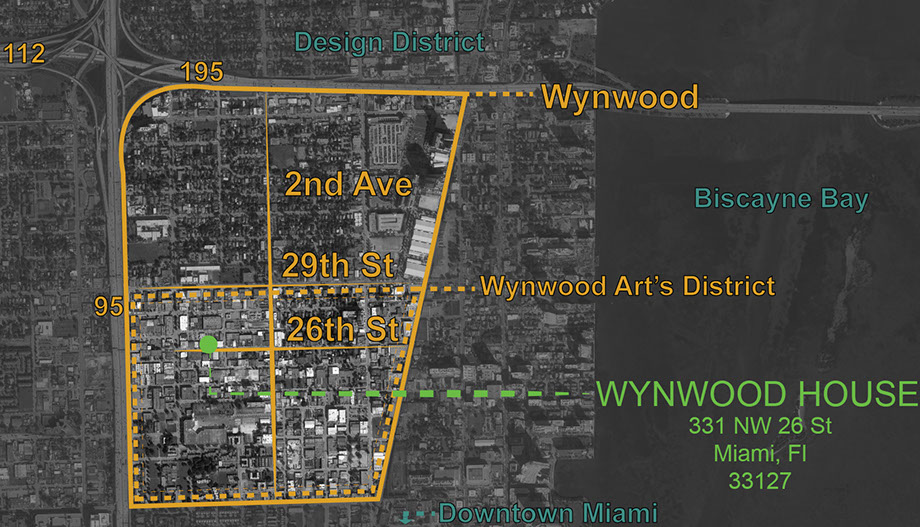
<
>
Wynwood House
The Wynwood House is a 3 story multi-use building located in the heart of Wynwood. The first floor has 7,000 sf of retail space, the second has 1,500 sf of office space, and the third has 7,800 sf of residences. The diagrams above explain the current financial assumptions and proforma of the building, and what kind of systems would be needed to take the building to an off-grid, autonomous state.
Find out more here: http://www.thewynwoodhouse.com/
SYSTEM STUDY: BATTERIES
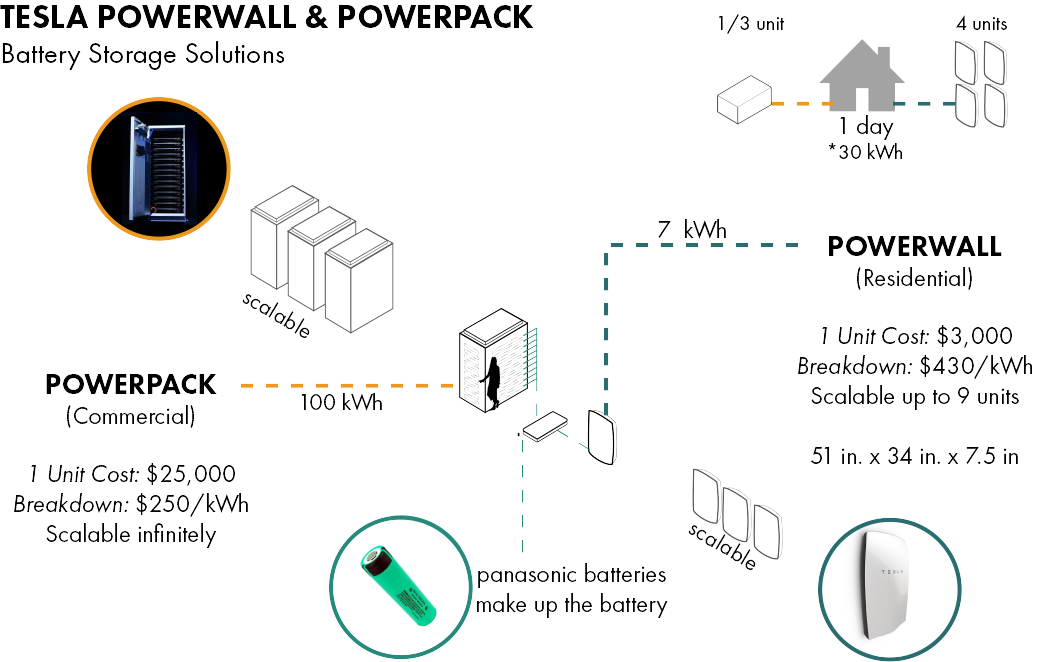
Tesla Powerwall and Powerpack
Powerwall is a home battery made by Tesla designed as a compact, wall-hung system that can be hung in your garage for residential use. It can be charged using electricity generated from solar panels, or by the grid when utility rates are low, and then provides power to your home in the evening. Powerpack is a larger scale battery system (100 kWh of storage), meant for commercial applications vs the smaller scale residential application of the Powerwall (7-10 kWh of storage).
Find out more here: https://www.teslamotors.com/powerwall
BUILDING STUDY: SUSTAINABILITY BASE (WILLIAM McDONOUGH + PARTNERS)
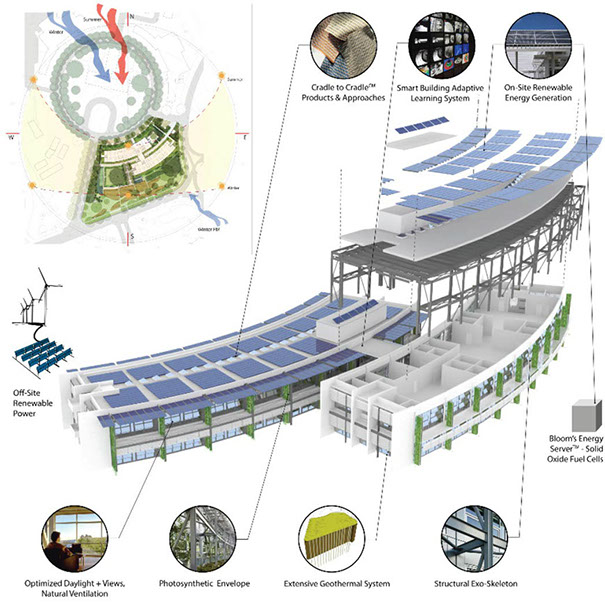
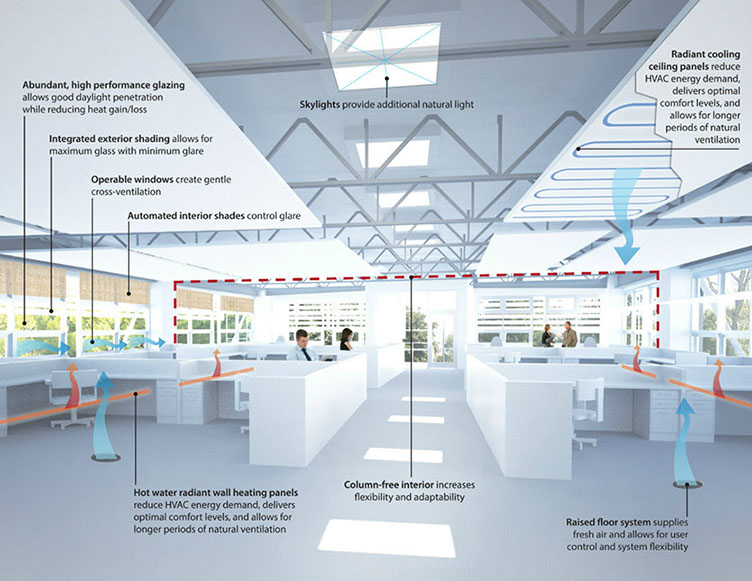
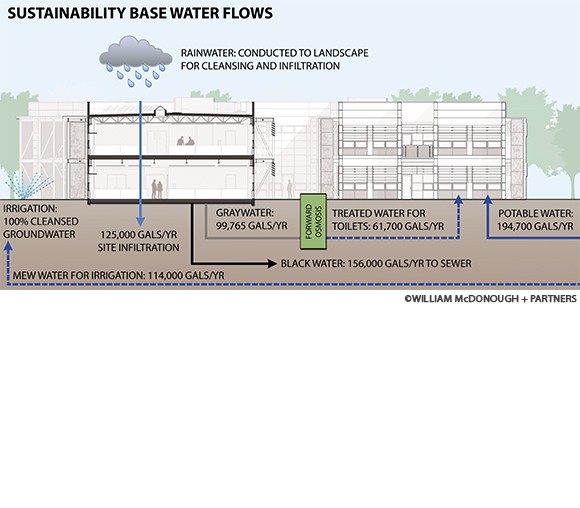
<
>
NASA Sustainability Center
Located in Moffett Field, California, this 50,000 square foot office building provides work space for NASA’s Ames Research Center. The building also serves to showcase the agency’s cutting edge technological systems, including ones originally designed for space travel. The project was designed by architect William McDonough + Partners, known for sustainable design and as founder of Cradle to Cradle.
The building generates more energy than it produces, uses 90% less water than that of a traditional building, and uses Cradle to Cradle approved non-toxic, recycled and recyclable materials where possible. Systems include a massive 85 kW solar system, a Bloom energy fuel cell, a small wind turbine, a super efficient greywater recycling system, geothermal heat wells, radiant heating/cooling, bioswales, and a forward osmosis water recycling system. The overall goal is to rely purely on renewable forms of energy as they become cost effective, adding technologies to experiment and utilize as they become available.
Find out more here: http://www.mcdonoughpartners.com/projects/nasa-sustainability-base/


